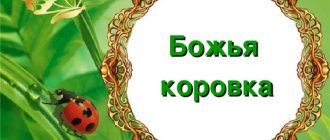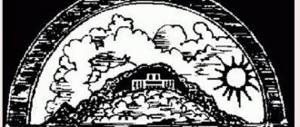Walking through a forest or field, you can immediately notice the amazing bellflower plant. People liked him because of his shape. In appearance, the flower resembles a small bell hanging on a thin stem, which is where its name comes from. Bluebell is a rather beautiful plant, with a pleasant blue tint. The bell grows in meadows; most of all, these flowers prefer forest glades. Many species have adapted to living in the mountains. Mountain flowers are a little different from those that grow in the field. They have a small stem on which very beautiful and large flowers are located. This is due to the fact that the small bell grows under the sun, which generously bestows its rays on it.
The bell is considered an unpretentious plant. They sow areas where an unpretentious climate prevails. Still, you rarely see them near a large and noisy city. This was influenced by human activity, which led this species to extinction. People love these wonderful flowers and pick them to decorate their homes. But the bell does not last long in the vase; it quickly begins to dry out and deteriorate. Therefore, it is best to leave it to grow in a clearing, among its usual place. Let not only fields and meadows enjoy the bell, but also small insects.
The bell flower is interesting for its diversity. For example, a spreading type of bluebell grows in the meadows. It is known for its thin stalk, with which the bell clings to tall grass, slowly rising towards the sun. The spreading bell received its name because many flowers grow on its stem. When the weather is good outside, the bluebell enjoys the sky and the sun with great pleasure, but when night comes, it leans toward the ground. The bell's petals grow together so they don't close at night. Thanks to this property, the flower has become an excellent place for many insects to spend the night, hiding from rain or threat.
Bells have always been considered not only amazing flowers, it is worth noting that they are also useful. Bell infusion has anti-inflammatory and antimicrobial effects. It is used to treat headaches and coughs. The bell flower is interesting because it can live in the same place for a long time. Ripe seeds fall into the ground and sprout as a new flower the following spring. From the beginning of summer until autumn you can see beautiful bluebells. This flower should be treated very carefully. It was listed in the Red Book due to the fact that people destroy the bell for their own purposes. Sometimes a flower is uprooted, but this should not be done. Today there are many clearings without bluebells, and this is very frustrating. Nature gave them to us so that we could admire them and not tear them out. It is better for a bell to grow at home in the forest under the sun than to wither in a vase.
Read also: Lavender wintering at home
Bell plant photo - the world around us, grade 1
READY REPORTS for school grades 1-11
- for free
- most popular topics
- adapted according to age
- competently
- written specifically for dokladiki.ru
Campanula is a beautiful plant that was named so because of the bell-shaped shape of its flowers.
Such flowers began to sprout in mountainous areas, and then appeared in forests and fields. Even in desert places and on rocks you can find a bell.
This plant lives in the Caucasus, Europe and Asia. Some species can also be found in North America. There are about 150 types of bellflowers in Russia!
This plant is a perennial herbaceous plant. But occasionally you can find annual flowers of the bellflower genus.
What does such an unusual plant look like?
The flowers are shaped like a small bell. The colors of the flowers are different. It can be white, lilac, blue and soft pink. The inflorescence of a bell is in the form of a brush or broom. The fruit is box-shaped, with 4 or 6 holes. The leaves are small, stemlike. Most often they disappear by flowering.
The height of the bell may vary. Depending on the type and place of growth, you can find both very small, barely noticeable flowers and tall, powerful plants. The bluebell can grow up to 1 meter in length!
These flowers bloom at the very beginning of summer. Some bells are always in a standing position, so they close their flowers at night. But in others, the flowers are lowered down day and night, so you can admire them at any time of the day.
This plant is perennial, but sometimes annual bells can also be found.
This flower is propagated by seeds and also by cuttings. If the plant is an annual, then it can only be propagated by seeds.
Despite the fact that the bell grows on its own, people willingly grow it in gardens and vegetable gardens. For what? This plant can be eaten due to its beneficial effects on the human body.
Bell infusion is often used to treat sore throats, colds and stomatitis. Also, a bath with the addition of a decoction of this plant has a calming effect on a person.
Report Bluebell in the Forest
Bellflower is a very beautiful herbaceous plant, which has more than 400 species. It grows mainly in meadows and forests, but is also found in the mountains. There are low species up to 50 cm in height, and there are also those whose stems reach 1.5 meters. The stem is often erect, but there are climbing and creeping types.
This plant owes its name to the shape of its bell-shaped flowers. According to legend, on the night of Ivan Kupala you can even hear them ringing. Flowers are often blue or purple, light or dark, less often white or pink. They are usually inclined downward and collected in panicle-shaped inflorescences. Because of their beauty, these flowers are collected, so they are in danger of extinction. This is also not worth doing because the bells collected in a bouquet wither very quickly, even if they are placed in water. If bells grow in dry places, their color is darker; in wetter places, they are lighter.
There are types of bells that are grown in gardens and flower beds. They are distinguished by larger flowers. This is a perennial plant, so clearings of bluebells bloom in the same place year after year. The bluebell usually blooms in mid-summer. After this, a fruit resembling a box is formed, from which small seeds fall out.
At night and when it rains, the bells are closed. They often provide shelter for insects. Bells have a pleasant honey aroma and contain a lot of pollen, which makes them good honey plants.
The bell is not only a beautiful, but also a very useful plant. Its various parts (flowers, stem, root) are used medicinally to treat coughs and headaches. A decoction of the plant fights microbes, so it is used to wash wounds, treat ringworm, and gargle.
Some types of bluebells are edible. Their leaves and flowers are added to salads due to their high vitamin C content.
Description for children of 1st, 2nd, 3rd grades
Bells flowers. Description, types and cultivation of bells
I'm ringing you with a bell. The heart is beating, and there is anxiety in the soul. My beauty, I love you. Reciprocate my feelings, touchy-feely!
Description and features of bells
Since childhood, people know that the bell is a cute flower. Bell flowers are lovely forest bells, reminiscent of a ringing bell in miniature.
The bluebell received the official name “campanula”, which sounds like a bell in Latin. A long time ago, people said that on the holiday of Ivan Kupala, those chosen could hear a small flower making a melodic sound.
The color of the bell flower can be traditional shades of blue, as well as rare white, pink, lilac tones, and even have a completely rare shade of red.
The bell can be seen in sunny meadows and fields, on forest edges. This is where you can actually find bluebell meadows. When you see such a simple plant, you want to put your ear to it and listen to what it is singing about.
Thanks to the science of breeding, it is able to please the human eye not only in the meadow, but also in the home garden. The bell flower has become a favorite plant in the northern hemisphere of the planet, as well as in regions with moderate climatic conditions. In the Russian Federation, the bell flower has traditionally been considered the Russian national flower; girls use it to weave wreaths and collect field bouquets.
Planting and caring for bells
There is no need to pre-prepare bellflower seeds for sowing. Sowing occurs in an open place in the last month of spring, or in October sowing is carried out for the winter.
For the bell to bloom this year, seedlings are sown around March. The best soil temperature suitable for seed germination is + 20 degrees. First, loose soil is prepared and small seeds are scattered over the surface of the ground. It should be light and have excellent water permeability.
And pay attention: it should be well moistened even before sowing.
Fertilizers are not required for the soil for bells, but they are prepared as follows:
- 6/10 of the soil composition should be turf;
- 3/10 of the soil composition should be humus;
- 1/10 of the earth should consist of sand, preferably coarse-grained.
Once the seeds are scattered, they are lightly pressed into the soil before moistening the soil with a spray bottle. Such crops must be covered with film and kept at a temperature of 20 degrees. Next, you need to wait 14 to 12 days for shoots to appear.
How to properly monitor seedlings
The shelter is removed as soon as the first seedlings begin to appear. The container will have to be removed from sunlight, as the sprouts need protection from it. This is the whole difficulty: the crop does not want to germinate in sunlight.
But they need to be placed in a place that will be well lit. And it wouldn’t hurt to spray them with water sometimes. This crop is grown like any other garden flowers. When the top layers of the earth dry out, they need to provide watering to the soil, and do not forget to loosen it periodically.
Three weeks after the seedlings emerge, young leaves will begin to appear, and during this period they need to be transplanted into a larger container, placing the plants at a distance of 10 cm. Fertilizer will need to be added to the ground, but not earlier than two weeks after transplanting.
How to properly transplant bells to an open place
Grown flowers are transplanted into nature in the last days of spring, or the first days of summer. Most varieties of bells are light-loving. Shade-loving ones can be recognized by their foliage with a bright shade of dark green, but these bluebells are very rare and they do not like drafts.
The land where the bells are transplanted is selected according to the type of plant. There are bluebells that like chalky soil, while others prefer rocky soil.
The selected soil must be prepared before planting. Heavy soil requires the addition of sand or an appropriate amount of humus along with deep and thorough digging.
When the soil has a very poor composition, it is necessary to add fertilizers to it, or if an appropriate amount of turf soil is required. It is worth remembering that you should not use peat or experiment with fresh manure; this will lead to various fungal and many other diseases of the bell.
Also, the soil for the flower should be free of stagnant water and non-acidic. Alkaline and neutral soils are perfect for this.
The planting site should be selected so that there are as few bushes or trees as possible, since they can take nutrients and most of the water from the root structure of the flowers. Therefore, you should not plant bluebells in a dense garden, as it will be difficult for these flowers to germinate there due to garden plants.
At what distance to place the flowers from each other depends on the type of flowers you have chosen. For example, tall species are seated at a distance of about half a meter, while medium-tall species will comfortably grow at a distance of 20 to 30 centimeters from each other. Low-growing seedlings should be planted at a distance of 10 to 15 centimeters.
The soil around the planted seedlings is well compacted, and they are immediately watered.
Bell flowers. The world
Bluebells are beautiful forest flowers. The shape of the flower resembles a large church bell, and the flower got its name from the word “bell”, only because of its size it is affectionately called, diminutively, bell.
It seems that the breeze will blow and the bell flowers will ring gently.
Bell
A gentle chime is flowing,
So it rings in the wilderness of the forest
The round leaves of the bell are located at the bottom and are collected in a basal rosette. There are small leaves in the middle, and larger ones at the edges.
There are always a lot of bells in the meadows and clearings, because whole families grow of them.
Bluebells bloom in May. The flower bud looks like a folded umbrella and is initially located horizontally. But when the buds open, the bell flower descends on the peduncle and looks down. Large insects - bumblebees and bees - can fly into the flower from below. While they get to the nectar located in the very depths of the flower, particles of golden pollen remain on their abdomen, back and legs. Flying to other bells, insects pollinate them.
Healing properties
Owners of private houses and summer residents use the bell to decorate the local area. Few people know that this plant contains various beneficial microelements, which is why it is often used in folk medicine. The stems and seeds of the bell, its leaves, roots and flowers are used for medicinal purposes. Powders, decoctions and tinctures are made from them.
Collecting raw materials will not be difficult. It is best to do this during the flowering period, when the plant contains the greatest amount of beneficial microelements. Information about bellflower, which can be found in plant reference books, will be useful to anyone. You can easily find out where the bell grows, as well as what healing properties it has.
Decoctions obtained from the bell have antimicrobial properties, so they can be used to treat fever, headaches, sore throat, cough and other diseases. Poultices made from a paste of dried leaves and ground flowers help speed up the healing of wounds. Tinctures and tea from the bluebell restore lost strength, helping with anemia and weakness.
It is also recommended to add a decoction of this plant to the bath while bathing a child, which helps prevent the baby from developing infectious diseases. Recipes for tinctures and decoctions based on bellflower:
The benefits of medicinal infusions should not be misleading; in some cases, one can even talk about certain harm to the body from such infusions. Contraindications to the use of bellflower-based products are leukocytosis and individual intolerance to this plant. In rare cases, signs of allergies are observed, which are expressed in redness of the skin and dizziness. If you have such symptoms, you should stop treatment, and if they do not go away within a few days, then you should consult a doctor.
An interesting fact about the bell is that in ancient times people believed in the love spell of the flower. Even today, no one knows whether this is true or fiction.
How to beautifully draw a bell flower with a pencil step by step for beginners?
In order to learn how to draw a bell with a pencil, be patient. You may have to repeat some steps several times, so prepare a simple pencil and a couple of colored pencils, an eraser and a sheet of thick paper.
First, draw a thin line with a pencil - this is the stem of the flower. Make three branches from the stem to the sides.
Step 1
Near each branch, draw the base of the flower and the borders of the side petals.
Step 2
Now draw the outlines of the bell petals. They are three sharp leaves.
Step 3
At the base of the buds, draw sepals - small and thin leaves. At the top, bottom and right flower, mark the place where the stem is attached to the bud.
Step 4
Make the stem of the flower thicker, give it volume. At this stage, draw a long thin leaf from the base of the stem.
Step 5
Mark the middle of the petals with even strokes, and add more leaves at the base of the stem. Draw an insect on the stem - a ladybug.
Step 6
Now start shading. Using a simple or colored pencil, mark the darkest places and places where there will be partial shade. The image should become three-dimensional.
Step 7
The flower is ready! There is nothing complicated in this execution if you try and follow the description.
The end result looks like this.
The work is completely finished
On a note! Use blue, purple or pink colors to draw the buds.






